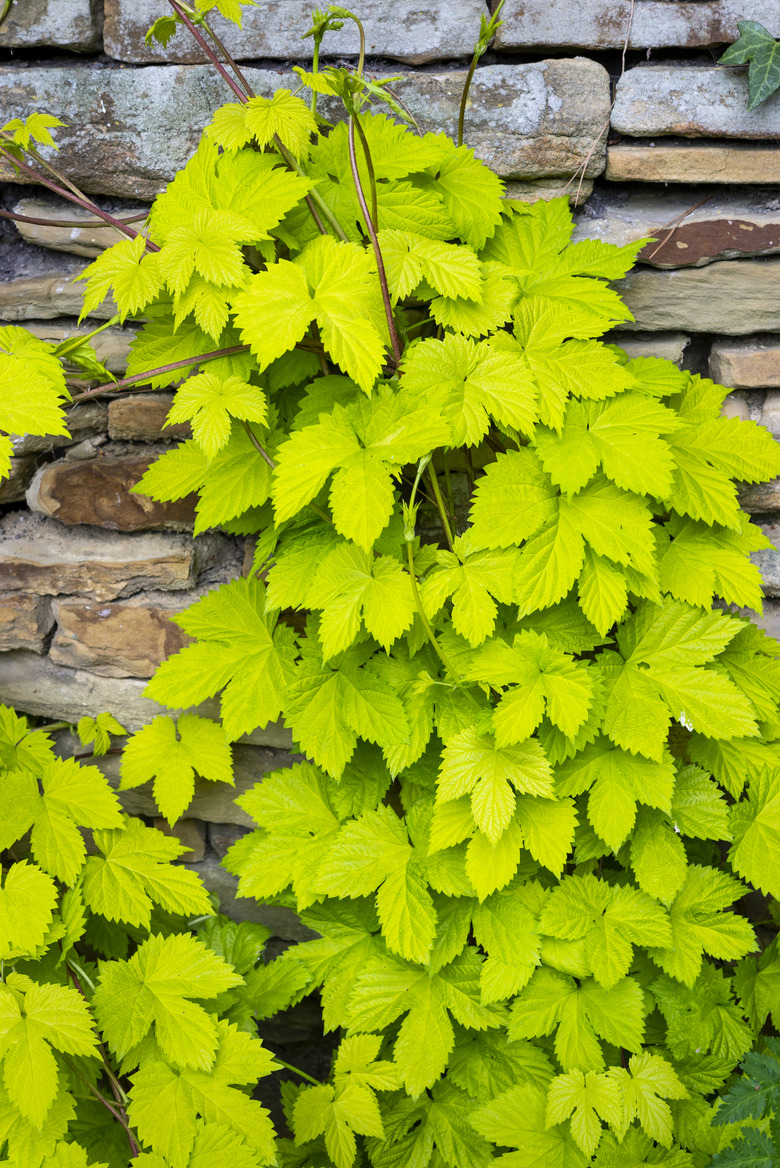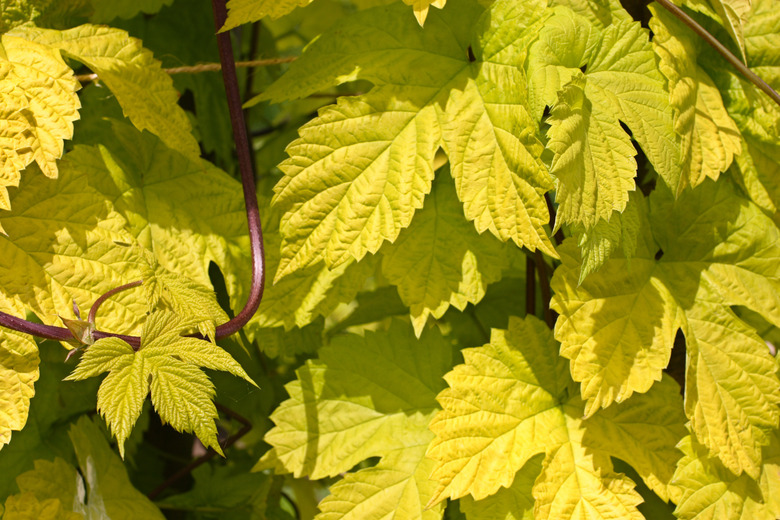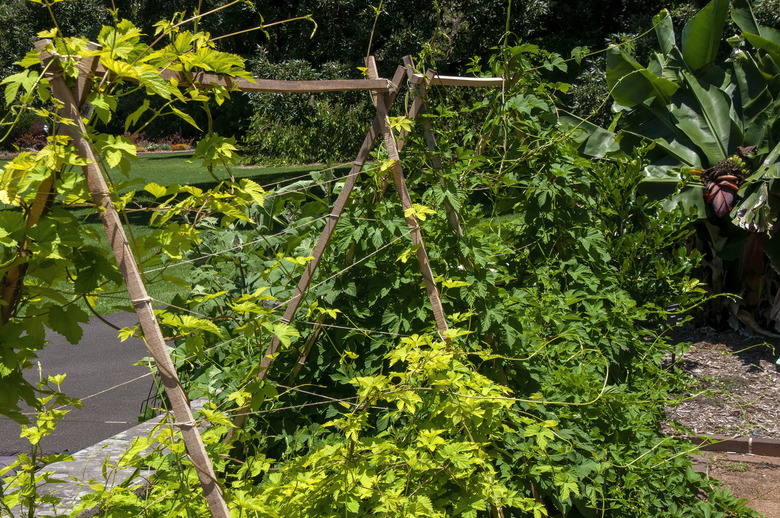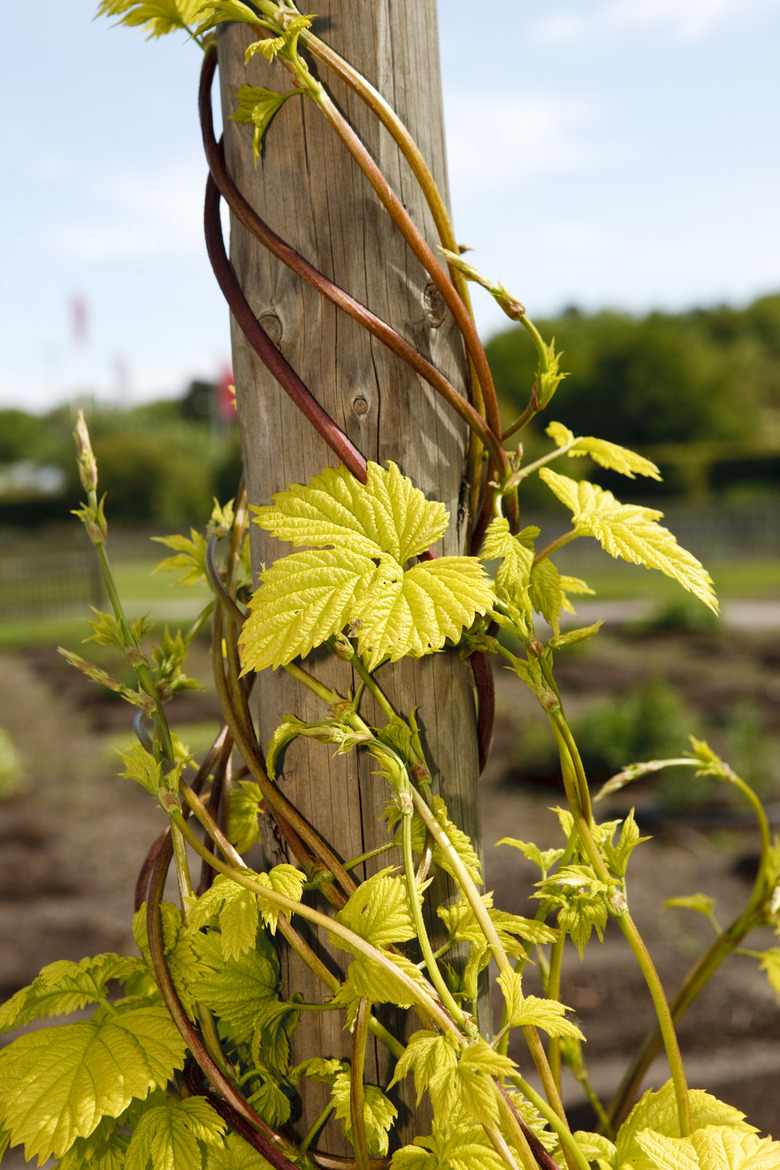How To Plant And Care For Golden Hops
Golden hops (Humulus lupulus 'Aureus') stands out among other hops cultivars with its chartreuse summer foliage, which has a rich yellow-green tone under bright sunlight. These fast-growing herbaceous climbers are perennial vines that grow best in USDA zones 5 to 8, where they can put on 10 to 15 feet of growth in a single growing season.
Golden hops vines are not typically grown for beer-making but for their ornamental value as well as for their ability to attract pollinators, such as butterflies. Few perennial vines are as eye-catching and fast-growing as golden hops, but these vines are not without problems. They can cause a mild skin rash when handled, and all parts of the plant are highly poisonous to dogs.
Starting Golden Hops Plants
Golden hops is a cultivar that will not grow true from seed and must be started from cuttings to reproduce the plant's attractive leaf color. The cuttings root best when started in late spring around May.
Choose a growing site in full sun or partial shade. These herbaceous perennials are not fussy about soil type as long as the soil is somewhat fertile and well-draining.
1. Install a sturdy trellis or pergola along the northern edge of the planting bed or prepare the planting bed near a south-facing wall if you want the hops to cover a structure. 2. Amend the soil with a 2- to 3-inch-thick layer of compost worked into the top few inches of soil. Make a long, low mound along the base of the trellis or structure. 3. Gather cuttings from the base of an established golden hops vine. The cuttings should be 6 to 8 inches long with a flexible stem and at least two sets of buds. Make the cut with sharp shears. 4. Stick the cut end of the golden hops cutting into the prepared mound, pressing it in until it is covered by 1/4 to 1 inch of soil on top. Space the cuttings 3 to 6 feet apart. 5. Water the golden hops cuttings well to settle the soil around them and to keep them hydrated while they root.
Golden hops cuttings root quickly and will put on several feet of growth by midsummer. Like most climbing vines, they need to be trained to their trellis early on.
Growing Golden Hops Plants
Golden hops is a relatively low-maintenance plant, but routine care will help keep it healthy and blooming well.
**Trellis training:** Training golden hops vines is one of the most important parts of growing them. Start training the vine to the trellis once the sprout reaches 2 feet in height. The vines can be tied to the trellis with twine or lashed to the trellis with garden tape. Don't bind the stems, or bines, too tightly, because too much constriction can harm them.
**Early pruning:** Golden hops plants sometimes develop problems, such as downy mildew and spider mites. One way to prevent these problems is to prune off the leaves and lateral branches from the bottom 4 feet of stem, which will increase airflow and eliminate hiding places for pests. Use pruning shears that have been wiped down with rubbing alcohol.
**Watering the soil:** Golden hops is somewhat drought tolerant once established, but it needs plenty of water early on. Provide 1 inch of water each week with a little more during hot, dry weather. Water when the soil feels dry below the surface. Do not let this plant dry out to the point of wilting or it may not produce its characteristic papery flowers.
Warning
To protect your skin and prevent a rash, wear gloves and long sleeves whenever you're working closely with golden hops.
Caring for Golden Hops Plants
**Fertilizer:** Golden hops plants need regular feeding during the growing season to support their growth and flowering. However, they should be fed with low-intensity fertilizer with an N-P-K ratio below 15-15-15. Mix the fertilizer at a rate of 1/2 teaspoon in 1 gallon of water. Feed with the solution each week during the spring and summer months.
**Pruning:** Golden hops plants need pruning early on to remove the leaves and lateral shoots from their main stems, but they need no pruning during the growing season. At the end of the season following the first frost, cut back the entire plant to ground level. It will regrow from the rhizomes the following spring when the soil warms up again.
**Pest problems:** Golden hops vines occasionally attract beetles, which can cause holes in the plant's attractive lobed leaves. The infestations rarely cause serious damage if they are treated early. Treat beetle problems with neem oil or another insecticidal soap. Spray the top and underside of the leaves during warm, dry weather. Reapply the spray a few weeks later.
References
- University of Arkansas Cooperative Extension Service: Plant of the Week – Hops, Golden Hops
- San Joaquin County Master Gardeners: Herb Study – Consider Hops for a Vertical Garden
- Fine Gardening: Cultivating and Harvesting Hops
- Missouri Botanical Garden: Humulus lupulus 'Aureus'
- Logee's Plants for Home & Garden: Cultural Information – Humulus



